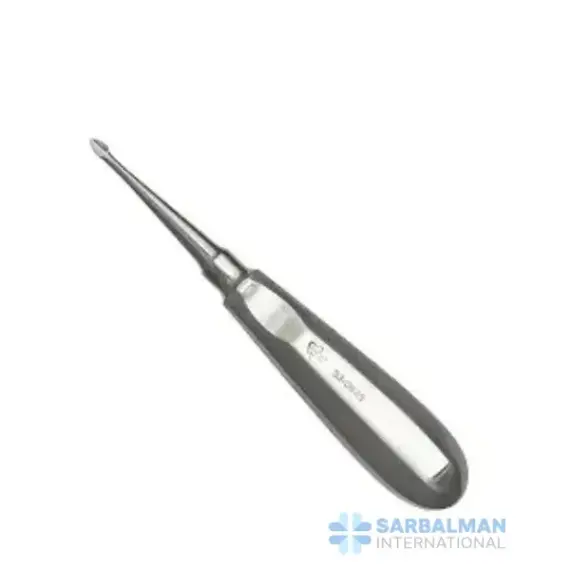Elevator
Free!
A dental elevator is a stainless steel instrument for luxating teeth and roots before extraction. Its thin blade and ergonomic handle deliver controlled leverage that severs fibers, expands the socket, and reduces forceps pressure. Offered in straight and curved patterns for access across the arch, it helps remove fractured roots cleanly and speeds surgical workflow while protecting surrounding tissues. Ideal for general and oral surgery settings.
Description
A dental elevator is a hand instrument used to mobilize and luxate teeth or roots before extraction. The working blade wedges between bone and root, transferring controlled leverage from the handle to expand the socket and sever periodontal fibers. This reduces the force needed with extraction forceps and helps remove broken roots cleanly. The instrument is manufactured from corrosion-resistant stainless steel and features a contoured, non-slip handle for secure grip in wet surgical fields. Tips are precision ground and hardened to maintain a thin edge without chipping. Common patterns include straight, curved, and cryers for mesial, distal, or interseptal access.
Key features and benefits
• Thin, sturdy blade for efficient wedging and luxation
• Ergonomic handle for torque control and reduced hand fatigue
• Balanced weight for tactile feedback and precise pressure
• Stainless steel construction suitable for ultrasonic cleaning and autoclave sterilization
• Available in multiple blade shapes to match tooth position and clinical approach
Typical applications
• Pre-extraction socket expansion to aid forceps delivery
• Removal of fractured roots and retained root tips
• Elevation of impacted teeth during surgical extractions
• Sectioning assistance in multirooted teeth
Comparison insight
An elevator is designed for leverage and prying. A luxating instrument has a thinner, sharper blade and relies more on apical pressure and cutting rather than torque. Choose an elevator when controlled leverage and robust strength are required.
Care guidance
Rinse promptly, use enzymatic cleaning, dry thoroughly, and sterilize according to clinic protocol. Inspect edges regularly and re-hone or replace worn tips to prevent slippage.




